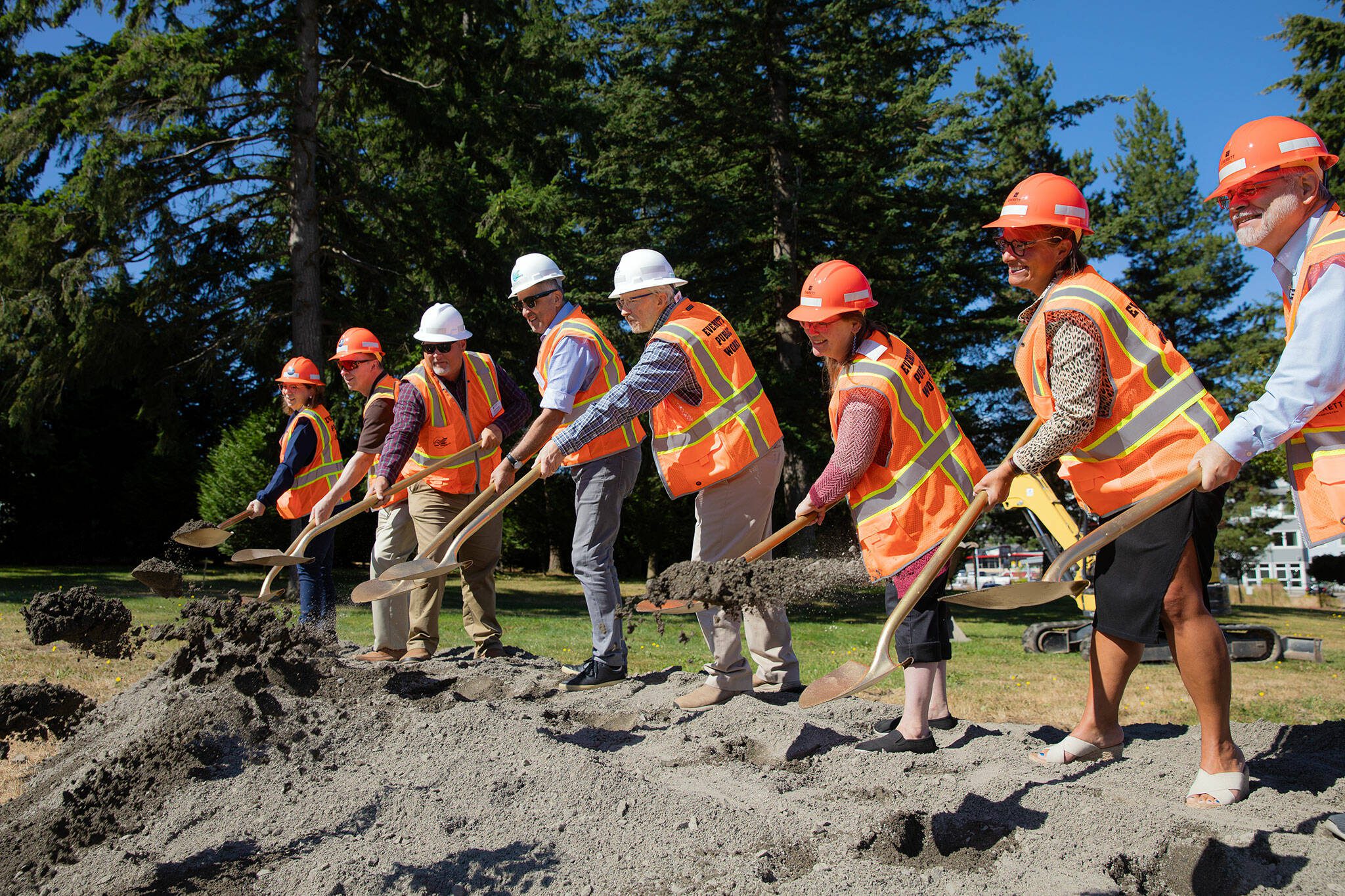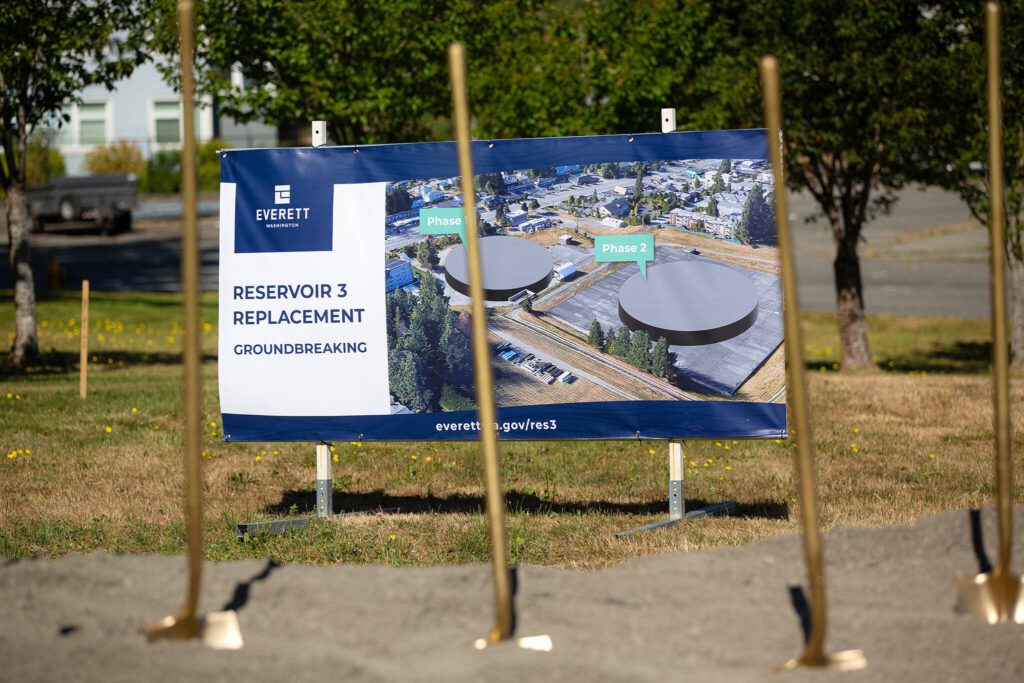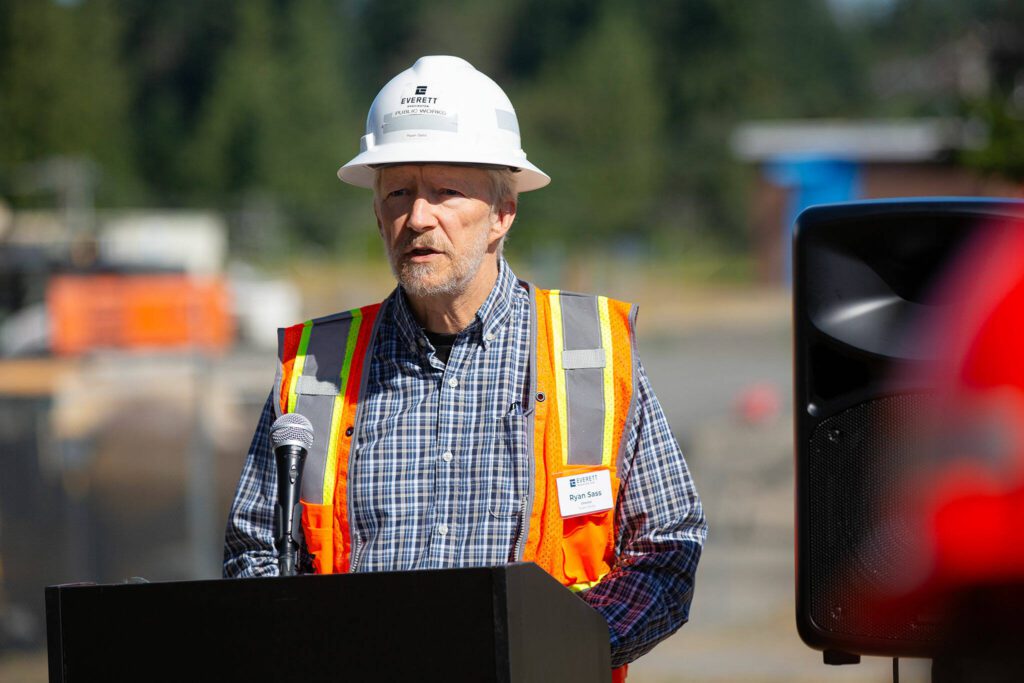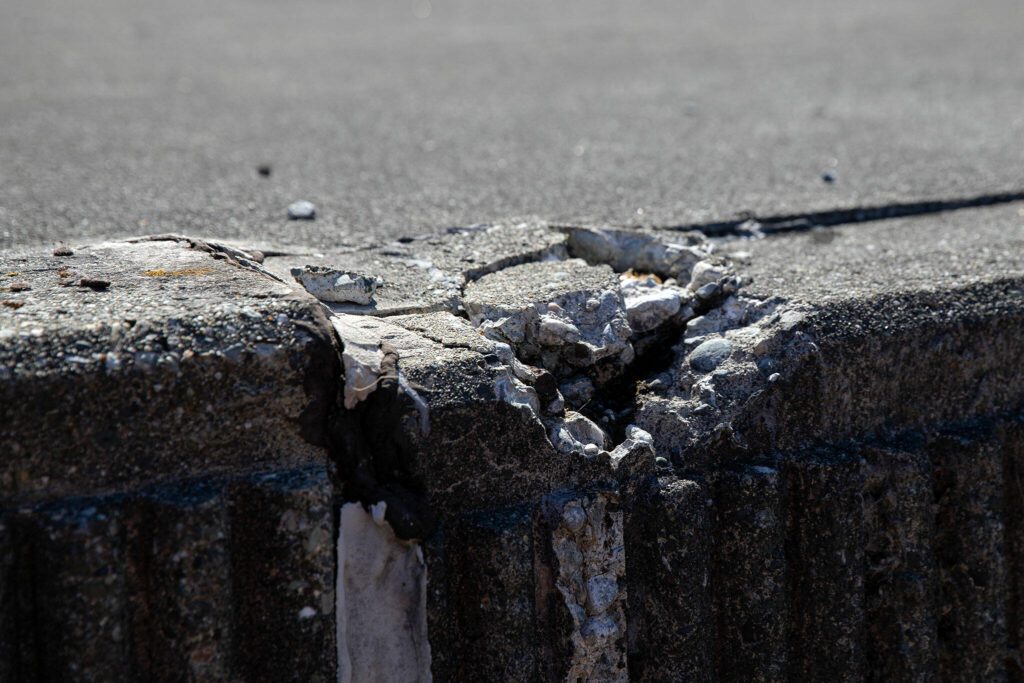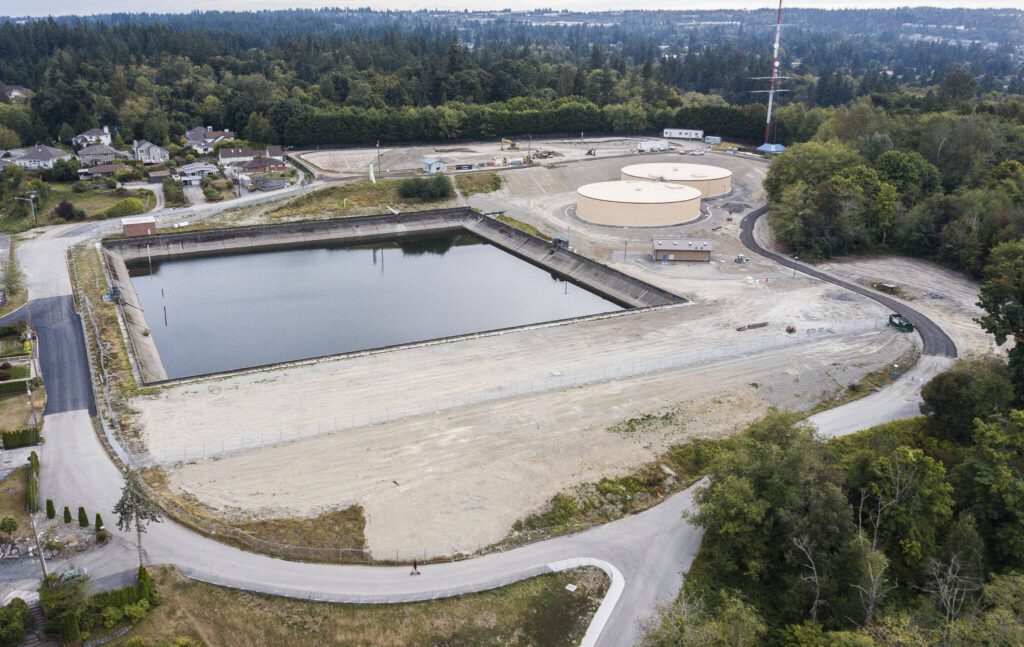EVERETT — At just over 100 years old, the city of Everett’s 20-million-gallon reservoir, named “Reservoir 3,” is starting to show its age.
The reservoir’s 3.8-acre concrete cover is slowly sinking. Built by the city about 30 years ago, it used to be level with its northern and southern perimeter walls. Now, it’s a couple inches below.
“Those supports are failing,” said Randy Loveless, a senior engineer for the city. “There’s concrete that’s falling apart. You’ve got one piece sitting on another and it’s starting to settle. What can happen is, if there’s too much vertical movement — that it’s not designed for — it can lead to a progressive collapse.”
A catastrophic earthquake along the southern Whidbey Island fault could dramatically accelerate the reservoir’s collapse, jeopardizing drinking water for over 70% of Snohomish County.
On Tuesday morning, city staff broke ground on construction for the new Reservoir 3 east of Evergreen Way, estimated to cost $80 million.
In phase one of construction, workers will build a new small reservoir that can hold 8 million gallons of water, while the larger, older reservoir remains in service. In the second phase, workers will demolish the older reservoir and replace it with one that can hold at least 12 million gallons of water.
Combined, the two new structures will provide water to about 450,000 people in south Everett, Brier, Bothell, Mill Creek and Mukilteo.
Last fall, city staff completed a similar replacement project for Reservoir 2 on Rucker Hill, which serves about 200,000 people.
Construction workers built two new reservoirs, with 2½ million gallons of capacity each, on more secure land next to the original reservoir. This project cost the city over $23 million.
One of the new reservoirs on Rucker Hill has an earthquake valve, said Souheil Nasr, utilities engineering manager for Everett.
“If there’s an earthquake, that valve will shut off,” Nasr said in a previous interview. “And we’ll preserve water in the reservoir for people to be able to access temporarily until we can figure out what to do and how to fix the system.”
Contractors will have an earthquake valve in Reservoir 3’s replacement, as well.
“The reason we’re going to only have one earthquake valve instead of two is because if there’s an earthquake, as we lose our distribution system, we want to make sure that one of the reservoirs will shut down to preserve water,” Nasr said. “The other one needs to remain open, so that all of the water that comes in the transmission line has a place to go. If you shut them both, then it’s going to overflow.”
City workers can also more easily maintain two small reservoirs, versus one large reservoir, Nasr said. Staff can take one reservoir offline and clean it while the other stays in operation.
The city expects to finish the first phase of Reservoir 3 late next year. Phase two construction is expected to begin in 2026.
Ta’Leah Van Sistine: 425-339-3460; taleah.vansistine@heraldnet.com; Twitter: @TaLeahRoseV.
Talk to us
> Give us your news tips.
> Send us a letter to the editor.
> More Herald contact information.
